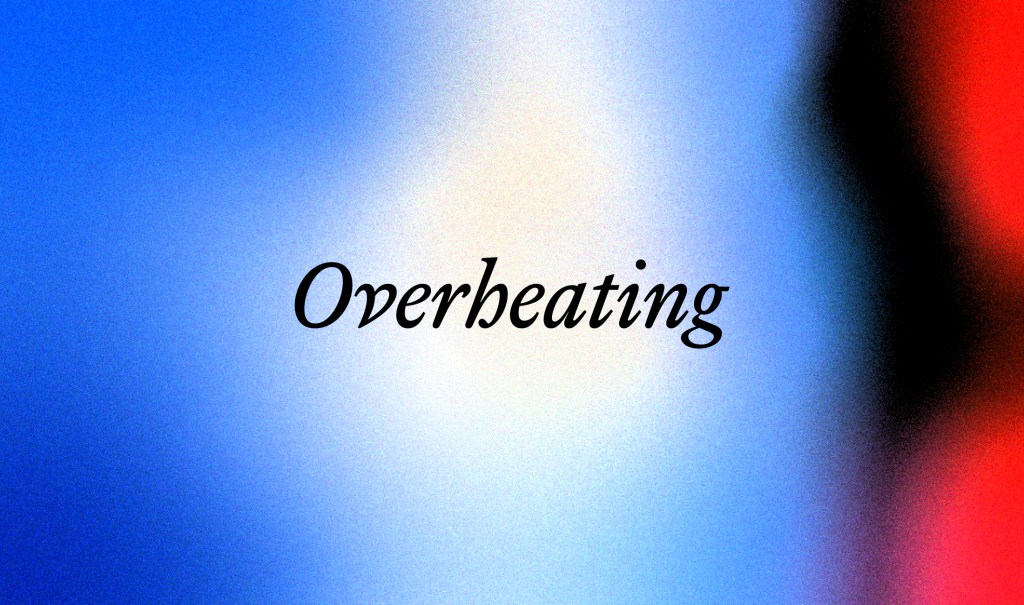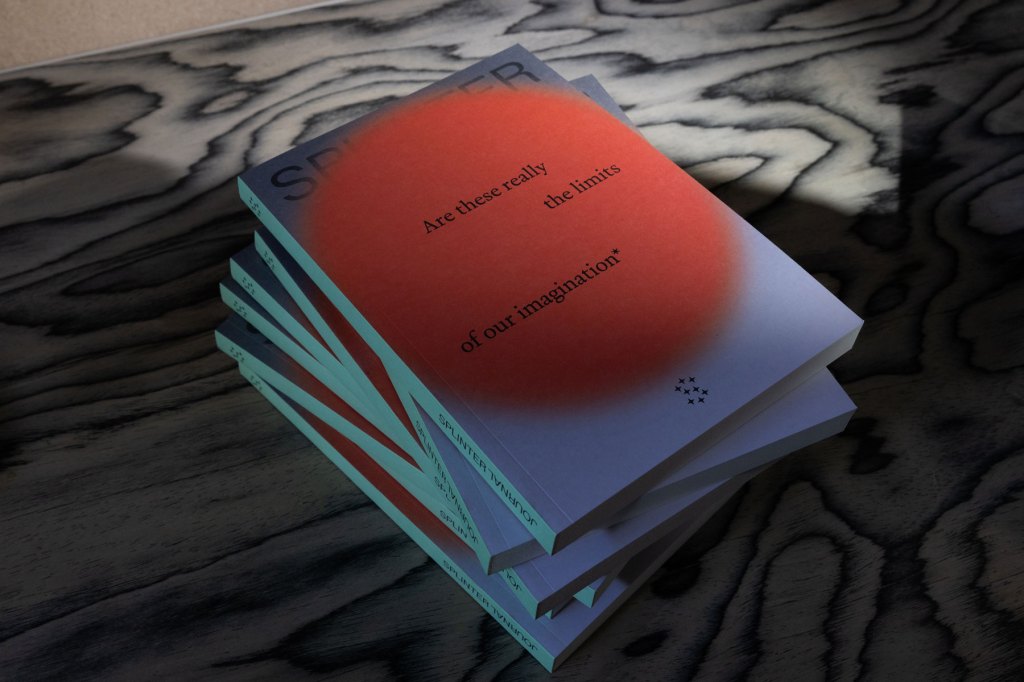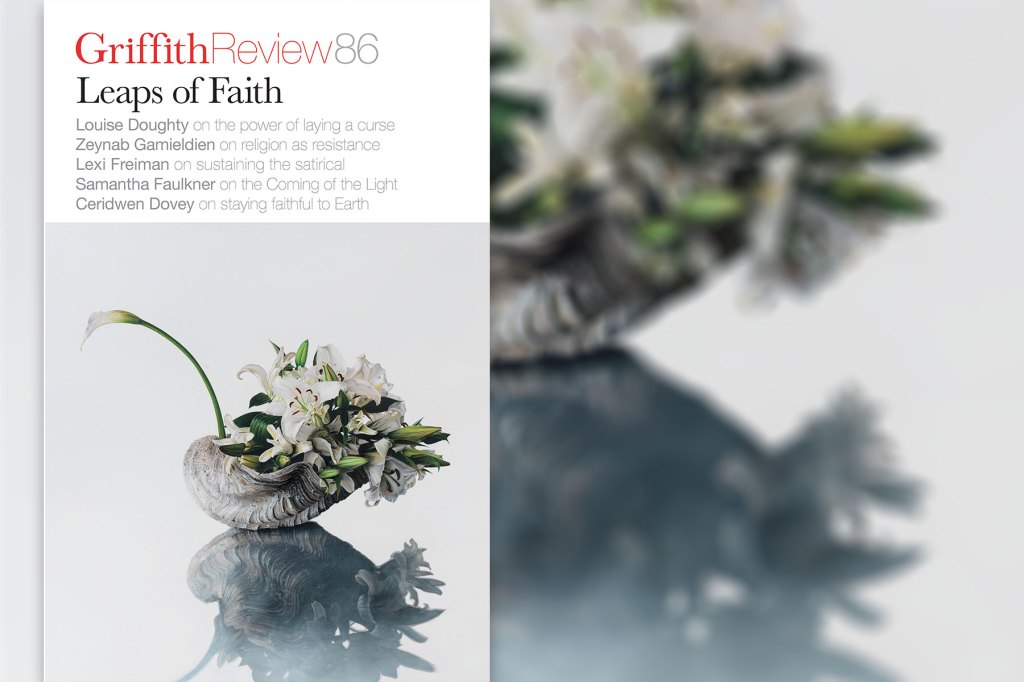Splinter journal extract: Overheating
In this extract from the inaugural issue of new literary journal Splinter, writer Finbar James narrates the extremes of the not-so-distant future with his story about the dying gasps of the mineral extraction industry.

A blast of hot air woke me up. Not that I was deep asleep: it was near impossible to find comfort lying in sweat-ridden sheets. Someone heading on shift had opened the door to the workspace and in rushed the excoriating heat that instantly defeated the one small air conditioner grumbling in the dorm. The door slammed shut and the sound propelled me up. I swung my legs over the edge of my top bunk and dropped to the floor, swollen feet throbbing painfully on contact. I checked my body temperature on my watch, dismissing the elevation alert. Surprise, surprise. I stumbled over to the basin and swallowed the bevy of pills I needed to drop my blood-pressure and made myself an electrolyte drink, gagging on its artificial “blackcurrant” flavour as I forced the effervescent crap down in one go.
The smell from the workspace over-rode the communal stench of the living quarters and my bloodshot eyes stared back at me balefully from the mirror over the basin. Too hot to eat. I scratched at my dry face – dirty stubble and gritty, flaky skin. Can’t be fucked shaving. I shuffled back to my bunk, rifled around until I found my cigarettes and lit up. Technically you weren’t supposed to smoke in the dorm, but everyone did and besides, it really didn’t make a difference to the smell. It takes a lot to overcome the sweat of 20 men in close quarters. I sat on the edge of an empty bottom bunk and pulled on my work pants and boots, donning a questionably “clean” hi-vis shirt, careful to avoid the synthetic fibres with my cigarette as I pulled it over my head. I would go to hell before I removed an unfinished smoke from my mouth.
Mineral sands, they said. No pits, no cuts, no 20 tonne trucks. Easy. Deeper in the desert than any of Hancock’s iron mines and 180kms to the nearest town, who hated us all because, well, we were dumping the water we used into their river. Out here you lived in the dorms, commuting 30 steps to the workspace, and got drunk or smoked meth or fought or quietly considered suicide in the portable toilets in your off hours. It used to be FIFO – fly in, fly out; three weeks on, one week off – but that was too expensive for the company, so you did your stint in one long stretch. Nine months on, three months off. Unless, of course, we were behind quota. And we were always behind quota. It had been 11 long months since I’d had a day off.
Rather than head straight into work, I stepped outside into an already-blazing sun and a temperature that was well above 30°. My skin prickled in the sunlight while I finished my smoke. Coffee? My head pounded at the thought. No. I just enjoyed the scenery instead. It was flat out here in every direction. No hills, just a horizon all the way around. There weren’t any trees; stubby, knee-high saltbush was all that could survive this environment. I flicked the butt at the rusty International Roast can by the door that served as an ashtray, skirted by all the misaimed butts no one had bothered to pick up. Time to work. My watch bleeped a warning that today would be 43°, meaning the workspace, the giant, low shed that loomed behind me – the one I couldn’t even bring myself to look at when I was outside – would probably top out at 55-60°. I begged whatever force could hear my silent plea to put me on the pumps today – the easy station where I’d have ready access to water.
I went back inside and crossed through the dorm. No one else had stirred, though I could tell by their breathing that they were all awake. If they got up, they’d have to work. You worked when you were upright and if you weren’t and they needed you, you’d be rolled out of bed, force-fed whatever stimulants came to hand and shoved out the door. A poster on the door warned us not to take drugs and work, giving us notice of the legally-mandated, randomised tests, then specified how long each drug would stay in our systems. The approach was to just pour water on the testing strips and send them back to head office. The point was not to fool the test, to be clear. The point was that the test was done. No one would ever actually look at the dipsticks. As far as they “knew”, in a legal and indemnified sense, we were the healthiest fucking workers on the planet: piss like Evian.
The blast when I opened the workshop door was like an oven being used to broil dirt. The shed, to quote the brochure, shared the same foundational footprint as the MCG but square instead of oval, and for pillaging the earth instead of sport. The pumps and mills kept it consistently 15-20° above the outside temperature. A small, stinking blessing in the winter; a huge, foul curse in summer.
Mineral sands mining is the last gasp of the mining sector. Sand, it turns out, is made up of a lot of things. Hidden among the grains are micrograms of iron, copper, zinc, lead, lithium, and a dozen other metals – even tiny flecks of yellowcake. To get at them you had to sift the sand. To sift the sand it needed to be made motile by dissolving it into a medium – in this case, water. A duplex pipeline led directly towards the river, 120kms east. It had a flow rate of just over a meg an hour: one million litres. Ten Olympic swimming pools-worth flowed through our pumps every day into the basin underneath this shed. The resultant sand/water soup was then sifted, dried, baked and processed. The water – ostensibly clear but still the colour of sickly grey mud – was dumped into settling tanks on the far side of the shed, then pumped back into the river. The settling tanks were to allow all the various contaminants we’d put into the water – mercury, lead and 15-syllable hydrocarbon compounds – to settle out before it was pumped back into the river. The water in there was never actually given the chance to settle – it was being pumped in and out constantly.
Walkways were suspended over the soil. You didn’t want to step on the sand because here, in the driest place on earth, it was quicksand. You’d sink straight through to the hard clay pan, some 15 metres below. It hadn’t happened while I’d been here, but horror stories abounded. Old hands liked to terrorise the new guys with stories of finding a bit of some poor sod’s jaw in the hoppers as they loaded ore at the railway depot. A couple of hundred kays east of our site, across the river, there was one of the oldest known human burial sites in the world. Somewhere between 40-42,000 years old. I sometimes wondered if there were human remains down here we shouldn’t be disturbing.
I clomped along the gantry, making it swing a bit with each step, which was always reassuring. I’m not a fat bloke – it’s hard to hold onto weight out here – but I always wondered what would happen if anyone heavier than me crossed it. I headed to the staff room where I’d find out which station I’d been assigned today. Unusually, there was a suit in there with all three foremen. A slick, greasy looking fucker, with Young Liberal written all over his pink neotenous face. He was 20 years my junior and several million dollars my senior. He was dressed up in what execs thought was “country gear”: pointy-toed pull-on boots with a lifted heel, moleskin pants, a belt that cost more than my weekly wage topped off with a ridiculous buckle featuring the head of a longhorn cattle, a flannel-pattern linen shirt, and a bleached-white felt hat. In deference to worksite safety regulations he had flung a hi-vis vest over the top of his ensemble. Instinctively I found myself looking around for the politician and media scrum I assumed accompanied him. He looked up as I entered, smiled with sick pleasure and spoke in a passable imitation of a Sydney Grammar accent.
Subscribe for updates
“Ah, there’s the man we’re looking for.”
The full text of ‘Overheating’ is published in Splinter journal, which is available in bookstores and online now.
Finbar James is a writer living on the unceded lands of the Barkindji people, at the junction of the Barkaa and Murray rivers. He is passionate about the environment and runs a kitchen garden program for local kids.

